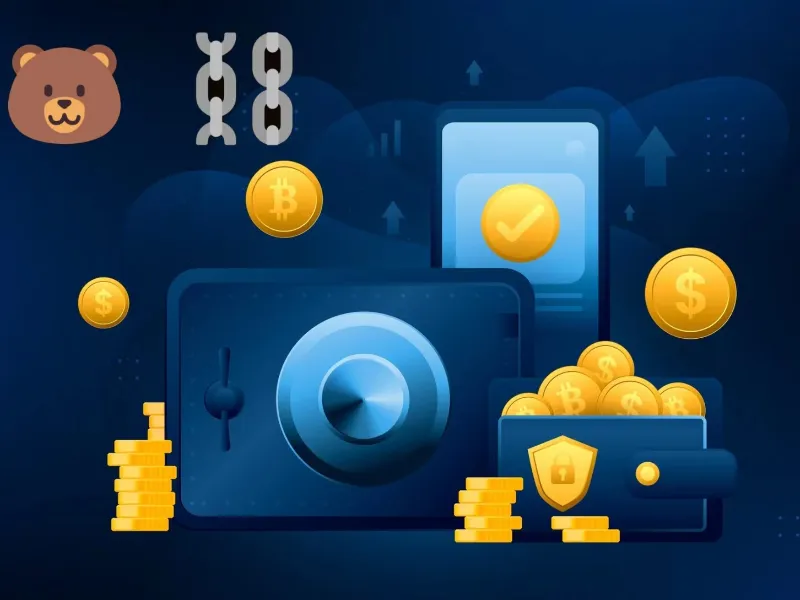- Berachain, founded by a team inspired by Olympus DAO, received significant Series A funding led by Polychain Capital.
- Berachain introduced the innovative Proof of Liquidity (PoL) mechanism, where users provide blue-chip tokens to earn governance tokens ($BGT) for node validation and voting.
- Berachain’s token system includes $BGT for governance, BERA for gas fees and rewards, and Honey as a stablecoin collateralised by USDC.
Berachain has evolved into a high-performance EVM-compatible blockchain, built on the Proof-of-Liquidity (PoL) consensus mechanism. Its goal is to adjust the network incentive mechanism by strengthening the synergy between Berachain validators and the project ecosystem. This innovative PoL mechanism holds significant importance for the development of blockchain technology.
Background of Berachain
On April 20, 2023, Berachain disclosed its Series A funding of 42.069 million, led by Polychain Capital with participation from Hack VC and OKX Ventures. From this funding amount and date, it is evident that the Bera team has a cult following. The four anonymous founders, known as Smokey the Bera, Papa Bear, Homme Bera, and Dev Bear, claim to be native crypto Degen, and the name Bera is intentionally misspelt as a homage to one of the most famous words in the crypto community, “HODL.”
Talking about the team’s background inevitably brings up their relationship with Olympus DAO. As described by Berachain co-founder Smokey, they are a group of early investors in OHM from the Olympus DAO community. Initially, this was just an NFT (non-fungible token) project among community members called Bong Bears, paying homage to OHM’s Ponzi mechanism, creating the first rebase NFT collection and spawning several new collections – Boo Bears, Baby Bears, Band Bears, and Bit Bears.
Later, following the collapse of the crypto market, this group of DeFi enthusiasts, inspired by concepts like Olympus DAO’s PoL and Terra’s native stablecoin, decided to design their own L1 public chain, leveraging the strengths of successful DeFi projects and avoiding their weaknesses, thus giving birth to Berachain.
Also read: What is the difference between fintech and blockchain?
Public chain mechanism
The Berachain team highly appreciates the Olympus DAO Protocol Owned Liquidity mechanism. Hence, they introduced the innovative (PoL) mechanism. According to Smokey, after experiencing many DeFi projects, they understood that liquidity is the most crucial factor for a project’s success. Therefore, how to bring as much liquidity as possible from blue-chip tokens into Berachain was the team’s first consideration.
In the PoL mechanism, users must provide their blue-chip tokens such as BTC, ETH, etc., to BEX (Berachain’s native DEX) to form liquidity LP and obtain protocol governance tokens $BGT. The $BGT token is responsible for the validation mechanism of nodes on the chain and has voting governance functions (such as determining rewards for LP pool tokens).
Also read: Philippine SEC wants Binance out of app stores
Berachain token
The positioning of BGT is similar to governance tokens in PoS networks, with the difference that BGT is non-transferable. Moreover, the ways to acquire BGT are relatively limited. Currently, users can obtain BGT emission rewards by providing liquidity on BEX, borrowing Honey, and providing Honey in Berps’ bHoney Vault. BGT can be used for governance participation; users can delegate BGT to validators and receive governance rewards. Once validators participate in block production, users can also receive transaction fee rewards and gas fee rewards within that block from Berachain’s native applications BEX, Bend, and Berps. BGT can also be converted 1:1 into Berachain’s Gas token BERA, although this process is one-way and irreversible, meaning users cannot convert BERA back into BGT at a 1:1 ratio.
The positioning of BERA is similar to native tokens in other public chains, mainly used for paying gas fees and block rewards. The difference is that holding BERA tokens does not confer governance voting rights; governance rights are allocated to BGT.
Honey is positioned as Berachain’s native stablecoin, providing a stable trading medium for applications on Berachain. Users can mint Honey by collateralising USDC at a 1:1 ratio.
Compared to the traditional PoS mechanism, the PoL mechanism excels in liquidity and security. The PoL mechanism introduced by Berachain not only creates a flywheel effect to increase TVL but also releases much of the existing liquidity of PoS native tokens. Limiting LP methods ensures that only blue-chip tokens can obtain $BGT, thereby protecting security.

